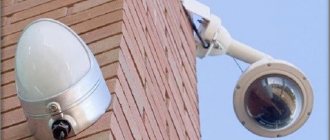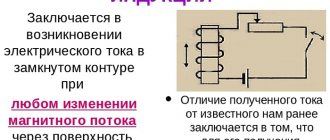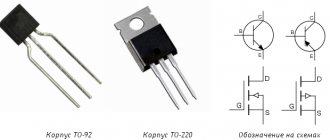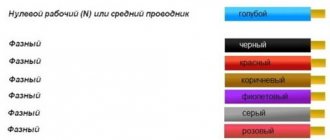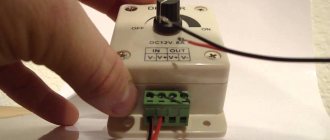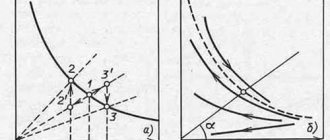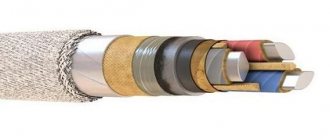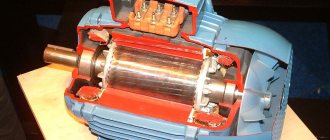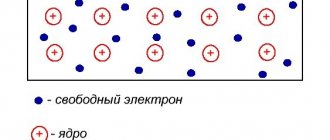Phenomena related to electricity are quite common in nature. One of the most observed phenomena is the electrification of bodies. One way or another, every person had to deal with electrification. Sometimes we do not notice static electricity around us, and sometimes its manifestation is pronounced and quite noticeable.
For example, vehicle owners, under certain circumstances, noticed how their car suddenly began to “shock.” This usually happens when leaving the car. At night, you can even notice a spark between the body and the hand touching it. This is explained by electrification, which we will talk about in this article.
Electrification in physics
Electrification is the process of charge separation in which electrically neutral bodies become charged. It can be described using laws of physics such as Coulomb's law and the law of conservation of charge.
Coulomb's Laws and Charge Conservation
Coulomb's law describes how charges act on each other. The force of their interaction (attraction or repulsion) is directly proportional to the product of their magnitudes and inversely proportional to the square of the distance between them. Opposite charges attract, equal charges repel.
The conservation law states that the algebraic sum of charges is conserved. If, as in the definition of a phenomenon, a positive charge appears on one object, a negative charge of the same magnitude should appear on the other.
Electric charge cannot exist without a carrier. This means that carriers—electrons—accumulate on bodies . A body with an excess of them is charged negatively, and with a deficiency - positively.
The names “negative” and “positive” for charges are arbitrary; the important thing is that they come in two different types.
Properties of static electricity
Not only solids, but also liquids and gases can become electrified. A redistribution of ions occurs in them. Substances of different classes are electrified: dielectrics, semiconductors, insulated conductors.
When electrified objects are separated, the charge on them remains. The further away the bodies are from each other, the greater the potential difference across them will be.
When in contact with neutral or otherwise charged bodies, the charge can relax - flow to another body, so a person in synthetic clothing can be “shocked” if he touches a metal battery or refrigerator. An electrical discharge can also occur through the air from a charged body to an uncharged one located at some distance.
Methods of electrifying bodies
There are several methods of electrification, which can be divided into two groups:
- Mechanical impact:
- electrification by contact;
- electrification by friction;
- electrification upon impact.
- Influence of external forces:
- electric field;
- exposure to light (photoeffect);
- influence of heat (thermocouples);
- chemical reactions;
- pressure (piezoelectric effect).
Rice.
4. Methods of electrification The most common method of electrifying bodies in nature is friction. Most often, air friction occurs when it comes into contact with solid or liquid substances. In particular, as a result of such electrification, lightning discharges occur.
Electrification by friction has been known to us since school. We could observe small ebonite sticks electrified by friction. The negative charge of sticks rubbed with wool is determined by the excess of electrons. The wool fabric is charged with positive electricity.
A similar experiment can be carried out with glass rods, but they must be rubbed with silk or synthetic fabrics. At the same time, as a result of friction, the electrified glass rods become positively charged, and the fabric – negatively. Otherwise, there are no differences between glass electricity and ebonite charge.
To electrify a conductor (for example, a metal rod), you must:
- Insulate the metal object.
- Touch it with a positively charged body, such as a glass rod.
- Discharge part of the charge to the ground (ground one end of the rod for a short time).
- Remove the charged wand.
In this case, the charge on the rod will be evenly distributed over its surface. If a metal object is irregular in shape, the charges will be distributed unevenly - the concentration of electrons will be greater on the bulges and less on the depressions. When bodies separate, a redistribution of charged particles occurs.
How to electrify an object
Static electricity can be created on the surface of the body in different ways:
- interaction with a charged object,
- friction,
- with a sharp change in temperature,
- exposure to ionizing radiation.
When an electrically uncharged body comes into contact with a charged one, the object becomes electrified with the same sign.
When objects made of different types of materials rub, opposite electrical charges arise on their surfaces. The reason for the phenomenon is the difference in forces with which atoms or molecules interact. Briefly, we can say that a substance in which atoms or molecules are bonded to each other more strongly attracts electrons from another, where the particles interact with less force.
conclusions
Let's take two identical bodies. Each body has its own charge. We will touch one body to another.
- If the charges of the bodies are not numerically equal and have different signs, then part of the charge will be compensated, and the remaining part will be distributed equally between the bodies. When the charges have the same signs, then the sum of the charges will be distributed equally between the bodies.
- If the charges of the bodies are numerically equal and have different signs, then the charge is compensated; after contact the bodies will have no charges. And when the charges have the same signs, then after contact the charge of each body will not change.
Examples of the phenomenon
The phenomenon of electrification itself was discovered back in Ancient Greece, when it was noticed that when amber was rubbed with wool, it began to attract dust, threads, and lint . This substance is called “electron” in Greek, hence the name of all phenomena related to electricity.
Glass is positively electrified when rubbing against silk, and ebonite is negatively electrified when rubbing against wool. Everyone knows examples of electrification in everyday life, for example, hair is positively charged when combed with a plastic comb, but the comb itself is negatively electrified. Glass, paper, wool are charged positively, rubber, silicone, plastic are negatively charged.
Static electricity lasts longest on objects if the air is dry. Moist air conducts electricity, and objects quickly cease to be electrified. In the presence of indoor plants or a boiling kettle, which increase humidity, static on clothes and hair appears less frequently.
A well-known example of electrolysis is lightning. This is an electrical discharge that jumps between differently charged clouds or between a cloud and the ground. Charged thunderclouds can cause electrification of various objects on the ground due to the redistribution of charges on them.
Electric field
In search of an answer to the question of the interaction of electrified bodies, many scientific studies have been carried out. As a result, scientists came to the conclusion that any charged body is surrounded by an electric field.
An electric field is a special type of matter through which the electrical interaction of charged bodies occurs.
- This type of matter is radically different from matter. We cannot detect its presence with our senses.
- An electric field surrounds any charged body
- The electric field manifests itself in the fact that it acts on any electric charge located in it
Demonstration experiments
You can show the interaction of equally or oppositely charged bodies using ordinary tape. To do this, you need two 12.5 cm strips of adhesive tape.
To demonstrate repulsion, the strips are glued to the table so that a piece 2.5 cm long remains free. These hanging ends are secured to two pencils. If you sharply tear the tape off the table without touching it with your hands, the strips will become equally electrified. Now they need to be separated at some distance and gradually brought closer together. At a certain distance, the repulsion of the strips will be noticeable.
To demonstrate the attraction of oppositely charged bodies, one strip of tape is electrified, as in the previous experiment, and then placed on the table with the sticky side up. Another strip, previously fixed on a pencil, is placed on the first one and then torn off. Then the strips will be charged oppositely. As in the previous experiment, at a certain distance you can notice the attraction of the stripes.
Properties of electrified bodies
- Attraction (repulsion) of small objects is a sign of electrification. Two bodies charged with the same sign react (repel), and bodies of opposite signs attract. The operation of an electroscope, a device for measuring the amount of charge, is based on this principle (see Fig. 5).
Rice. 5. Electroscope
- An excess of charges disrupts the equilibrium in the interaction of elementary particles. Therefore, every charged body strives to get rid of its charge. Often such deliverance is accompanied by a lightning discharge.
Process danger
The charge on an electrified object can be quite large, and the voltage can reach tens of kilovolts, but due to the very small current values, it is not dangerous for humans .
However, such small discharges can have a negative impact on precision electronics, such as microprocessors, so when working with electronic components: during their production, repair or use, special attention is paid to preventing electronization.
Under some conditions, relaxation of a large accumulated charge can lead to combustion. Airplanes are electrified in flight, so a discharge can occur when the ramp is brought up. To avoid this, static electricity is removed from the aircraft by discharging it into the ground. For the same reason, fuel tankers are always equipped with a chain in contact with the ground. This prevents fuel fires.
Electric field properties
- An electric field arises around any charge
- It is determined by the effect on another electric charge
- All electrical interactions are accompanied by the formation of an electric field
- An electric field has some energy
The last property is a consequence of the fact that an electric force acts on a charge in an electric field. If a force acts, then the field does some work. If work is done, then the field has a certain energy .
Practical use
The accumulation of static electricity on objects can be dangerous, but there are also positive aspects to this phenomenon . Electrification of bodies is used in practice in various fields:
- Electrostatic filters for purifying air from contaminants, mainly dust, are used in everyday life and in industry.
- Electrostatic painting of surfaces, for example cars. The electrified paint particles are attracted to the surface being painted, resulting in less paint being wasted.
- Production of artificial fur. The finished pile is passed through a mesh, it acquires a charge and falls perpendicular to the glue-coated base.
- Smoking food using electrostatics.
This phenomenon is also used for sorting, filtering, and purification. Electrostatics is also used in medicine.
Electrification is associated with the occurrence of an excess or deficiency of electrons on the surface or inside objects. They can be created in different ways, for example, by friction or touching a charged object. Electrification has practical uses, but can be dangerous in some cases.
Answers
Electric field. The effect of an electric field on electric charges. Conductors and dielectrics →
← Melting and crystallization
Electrification of bodies. Two types of electric charges. Interaction of electric charges. Law of conservation of electric charge
5 (100%) 3 votes
Exercises
Exercise No. 1 Where will the negatively charged fluffs move when they are caught in the electric field of an ebonite stick rubbed with fur?
If we rub an ebonite stick on fur, it will acquire a negative charge. If it now has an electric charge, then there is now an electric field around it. Negatively charged fluffs will be repelled from the ebonite stick, since the stick and fluffs have the same charges.
Exercise No. 2 A stick with a charge of the opposite sign was brought to the charged cartridge case. How will the deflection of the sleeve change as the stick approaches? Why?
The closer we bring the stick to the sleeve, the more the latter will deviate - its angle of inclination will increase. This will happen because as the distance between the stick and the sleeve decreases, the effect of the electric field will increase.
